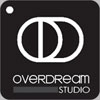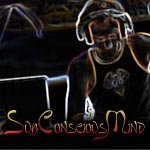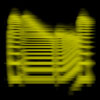| Author
|
Headroom ......... ??
|
Get-a-fix
Getafix

Started Topics :
147
Posts :
1441
Posted : Mar 15, 2007 15:44
|
Thanks for the quick reply ido!
So from what i understand the steps should be like this right?
1. Bounce down in 24bit
2. Import mixdown, maximize to taste
3. Bounce again with UV22hr to 16bit
Quote:
|
I use voxengo r8brain PRO. its does the job properly
|
|
I tried using the r8brain free version but you can only use it when you have to change the sample rate..Does the pro version also allow you to change the bit depth even if the sample rate is the same?
        http://www.soundcloud.com/getafixmusic http://www.soundcloud.com/getafixmusic |

|
|
makus
Overdream

Started Topics :
82
Posts :
3087
Posted : Mar 15, 2007 15:48
|
just tryed Ido's method and that works. shit, im pretty surprised. thanks again, that thing changed my point of view on peaks, gains, meters and matering process a bit.
       
www.overdreamstudio.com |

|
|
Ido (Domestic)
Domestic

Started Topics :
0
Posts :
42
Posted : Mar 15, 2007 15:49
|
yup , like that exactly 
the only thing is that of course it would sound better and not distort to quickly if u compress it right to kill some peaks before and eq it as well if needed .
it will distort quickly if u got too much bass or too many peaks.        .ParadoX Rocks. .ParadoX Rocks. |

|
|
Get-a-fix
Getafix

Started Topics :
147
Posts :
1441
Posted : Mar 15, 2007 15:53
|
|
makus
Overdream

Started Topics :
82
Posts :
3087
Posted : Mar 15, 2007 16:23
|
when i was young and made my first tracks 8 or 9 years ago i found out that if i put my mixed track in sound forge 4.5 and put a very small ammount of distortion on it i will get louder and more solid sound in result. i think that Ido's idea is quite near mine young experiments =)
       
www.overdreamstudio.com |

|
|
subconsciousmind
SCM

Started Topics :
37
Posts :
1033
Posted : Mar 15, 2007 23:09
|
Wow,
a Manley Varimu comp, I heard it's really coloring and quite a matter of taste. But those who like it say it's great and love it above all.
together with the converters you mentioned... !nice!
I would love to try out a couple of comps like this one to find out what I like. But around here I don't have the opportunity to listen to some more "exotic" stuff.
(around here all except SPL and Focusrite and the lowcost stuff is "exotic") ....
I will try out all the tipps with my current song this weekend  thanks again for all the tipps thanks again for all the tipps
        Most of my music for you to download at: Most of my music for you to download at:
http://www.subconsciousmind.ch |

|
|
Colin OOOD
Moderator

Started Topics :
95
Posts :
5380
Posted : Mar 16, 2007 05:05
|
Ok... I've just mastered a version of a track, ready for a gig I've got this weekend. I did it twice; once with my regular 2dB of L3 and once with 2dB of clipping and IDR. I wanted to be able to A/B the two limiting methods so instead of following Ido's instructions I put a Waves C1 EQ (with everything turned off) in the chain with the output gain set to +2dB. Even then, the mastered waveform didn't clip (although Cubase did on the way out to my monitors); I mix and master at 32-bit float so all that happened was that, in the final audio file, the peaks of all the kicks ended up at +1.5dBFS  The clipping occured when I truncated the master WAVs to 16-bit (for CD), fixed-point formats being unable to encode levels above 0dBFS. Clipping is clipping, I figure; I believe this is functionally identical with Ido's method. The clipping occured when I truncated the master WAVs to 16-bit (for CD), fixed-point formats being unable to encode levels above 0dBFS. Clipping is clipping, I figure; I believe this is functionally identical with Ido's method.
The only thing I forgot was to bring the clipped master down to -0.1dB; I guess I'll find out at CoSM if the decks will play it!
When I get back next week I'll edit some clips out of both of them and post them as WAVs (renamed, of course, so you don't know which is which...), and you can decide for yourself.  You've got to promise not to peek at them before you listen though! You've got to promise not to peek at them before you listen though!        Mastering - http://mastering.OOOD.net :: www.is.gd/mastering Mastering - http://mastering.OOOD.net :: www.is.gd/mastering
OOOD 5th album 'You Think You Are' - www.is.gd/tobuyoood :: www.OOOD.net
www.facebook.com/OOOD.music :: www.soundcloud.com/oood
Contact for bookings/mastering - colin@oood.net |

|
|
dija
IsraTrance Junior Member

Started Topics :
48
Posts :
483
Posted : Mar 16, 2007 05:24
|
I find it hard to believe that it is acceptable to send a mix that is clipping to a mastering engineer. Or to even have a mix that is clipping. I have noticed that the cubase meters are much more sensitive to clipping than others.
Please explain to me how its ok to have clipping.
I personally prefer mixed and mastered content thats a few db below 0...listening to old releases they have such a better sound because they're not all mashed to hell with the EQ being flat barred. |

|
|
Seppa

Started Topics :
8
Posts :
485
Posted : Mar 16, 2007 05:57
|
Quote:
| Clipping is clipping, I figure; I believe this is functionally identical with Ido's method. |
|
Quote:
| When I get back next week I'll edit some clips out of both of them and post them as WAVs (renamed, of course, so you don't know which is which...), and you can decide for yourself |
|
hehe ! Combat of the Titans!....
lets see where this leads
|

|
|
Katapult
Started Topics :
0
Posts :
27
Posted : Mar 16, 2007 07:49
|
Something that was missed in the early discussions of this thread was a point about clipping that I would like to revisit. The quote was "If your track plays back without clipping the master outputs, it has enough headroom." That is not necessarily true in digital recording. In digital recording, there is no going to 11 (to reference Spinal Tap). Once a signal reaches 0 dBFS, any data above it is lost. The DAW will then interpret everything as a flat line of the wave form until the level goes below 0. So now even though your levels may have been off the charts at the time of recording, when you go to play this back Your highest peak will only be 0 dBFS.
Something to know about Daws - all of them have a different way of calculating peaks. This is typically done by setting the program to measure the number of samples in a row that equal 0 dBFS. Once that number has been met, your Daw will indicate a clip. This is why if you are working on a file in WaveLab and import that file into Cubase, you are likely to see clipping in Cubase even though there was none in WaveLab.
I can see Ido's point about using clipping in Cubase as a limiter but you need to be careful when doing this - you could easily go overboard with it and not be able to recover lost data. He illudes to this in saving a new file so that your original work can be recovered.
Digital clipping works much like a limiter in that it does not allow a level to go beyond a certain peak. However with analog limiters, there is a breif instance when the limiter is triggered to the time when it actually starts doing its job. It is the slight delays that contribute to the artifacts you hear when limiting. I have an excellent CraneSong compressor which also has a limiter, but I use the limiter sparingly when mastering because of the artifacts it produces. I typically prefer digital limiter when mastering dance tracks because they have the nice look-ahead feature to actually analyse what is coming up so that there won't be the delay before the limiter reacts.
A question I have to you Ido is why when you export your tracks do you back off the level by -0.1? At this point, the wave forms are already limited (or clipped)?
Kat
        PAR-2 Productions - PAR2, Jikkenteki, Katapult www.par-2.com PAR-2 Productions - PAR2, Jikkenteki, Katapult www.par-2.com |

|
|
Trip-
IsraTrance Team

Started Topics :
101
Posts :
3239
Posted : Mar 16, 2007 08:56
|
It's also valid to mention that when you clip in another DAW like Logic - when rendering at 24bit - the waveform will show a plain clipping action, instead of above 0dbFS action. Even though Logic's meters can calculate above 0dbFS peaks.
I'm afraid this works only with 32bit float rendered files, which in the end are lowered back below 0db for the 16bit resolution.
PS: notice that when you clip a track above 0db, since the mixing done at 32bit float - bringing the master output fader down will allow seeing the supposedly clipping track on the output meters as a non-clipped signal - as if no clipping ever accured.
Clipping is basicly reserved to represent integer resolution. (24bit) Mind that when rendering to 24bit.
        Crackling universes dive into their own neverending crackle... Crackling universes dive into their own neverending crackle...
AgalactiA |

|
|
Ido (Domestic)
Domestic

Started Topics :
0
Posts :
42
Posted : Mar 16, 2007 13:56
|
Clipping in a way works quite similar to the way Limiters do ,
the limiter goal is to raise the overall level without affecting the sound and to be as transparent as it can be.
the idea behind it is that the limiter has to have very fast attack and release , the faster the better , so the human ear could not hear the distortions .
peaks that are about 4 to 10 mS cannot be heard by human ear , and thats all what limiters about , it does distort the sound and compress it like hell , but its doing it on the peaks which are inaudioble ,
u will hear the distortions only if the peaks are long or the limiter is working on the RMS area.
Clipping work quite the same way only that instead of compressing the signal over the threshold it produces a square wave which can be heard as distortions , the thing is that like the limiter as long as its very short peaks and clipping dont occur in the RMS area , the distortions are inaudible.
of course its easier to distort the signal with clipping so u have to be really carfull and listen to the whole track to see if its distoted but for my ears it is much more transparent than any other limiter i used.
i used the L2 which is tottal crap till like 4 years ago when i started to feel that its just makes my sound very soft , so i started doing a/b tests with lots of limiters , and realized that L2 is completly killing the sound
i dont know how the sell it and say its the best and everybody use it as standard .
so the best limiters i found among about 10 are the Logic's adlimiter which is very good and the Timeworks Mastering compressor which sounds more like clipping to my ears and u also have to be carfull with it.
but after working with all of them and testing alot my conclusion is that cubase clipping is the most transparent.
the adlimiter and the timeworks are very good but timeworks sometimes makes annoying distoriotions and they both cut the lowend very slightly and make the overall sound a bit smaller than original.
the way i use clipping today is - i go out out to my gear , make the whole process ,than when i go back to my DAW i clip my Lavry blue to an almost master level , which already cuts the peaks , then i record it 24bits and do some more proccesing , and in the end i clip the channel in cubase .
the fact that its already been limited before with the lavry makes it much easier to clip it in cubase without distortions and raise to a very high level.
anyway i know that many of u think 'its an outrages' and its so 'theoriticaly wrong'  but i simply NEVER follow the rules and do only whats good to my ears! but i simply NEVER follow the rules and do only whats good to my ears!
u can judge and say if all the masters ive done in the past years are distorted or not 
but i can give u a nice example if u like:
put a track in a channel in cubase (try to put a good mixed one and try to put a punchy track) 
now raise the level just by pushing the channel's fader and try to get to about -12 or -11 RMS (if u dont know how to monitor it just compare the level to a mastered track) if u have and RME and u monitor with Digicheck that will be about -6 RMS (i dont know where the hell they found these numbers)
now just put and L2 on the channel IN INSERT 7 OR 8 , it has to be 7 or 8 cuz these two are post fader.
now just leave the L2 as it is at 0 , and actually the input level is controlled by the channels fader cuz it is post fader.
so u can simply a/b clipping with L2 by just pressing bypass on the L2 .
to hear a big difference the level has to be very high , Master level.
now u say what u think  i think its quite amazing and its very hard not to hear the difference. i think its quite amazing and its very hard not to hear the difference.
btw colin have u considered that the dithering u use is not good enough?
Kat , the reason i back off the level is cuz some say that some old cd players cannot read cd's that are clipping in 0db , and also cuz i just dont like to see red leds in my meters 
jee , that was long....sorry
        .ParadoX Rocks. .ParadoX Rocks. |

|
|
Terrafractyl
Terrafractyl

Started Topics :
12
Posts :
85
Posted : Mar 16, 2007 14:48
|
|
Tomos
IsraTrance Full Member

Started Topics :
84
Posts :
981
Posted : Mar 16, 2007 15:53
|
I'm really loving this technical talk.
Except.. uh-oh..
Quote:
|
On 2007-03-16 13:56, Ido (Domestic) wrote:
..put and L2 on the channel IN INSERT 7 OR 8 , it has to be 7 or 8 cuz these two are post fader.
|
|
This is something seemingly fundamental I didn't know about. Post which fader, master?
I don't understand the significance of inserts 7 & 8. Help please! |

|
|
Ido (Domestic)
Domestic

Started Topics :
0
Posts :
42
Posted : Mar 16, 2007 17:53
|
well its easy , in the channel u put the track on u got 8 inserts for insert fx , number 7 and 8 are Post fader which means that the fx u put on 7 and 8 are after the fader which means that the fader itself determines the input level of the fx - if the fader is low the fx will get low signal input - if the fader is high ...u can imagine what will happen 
inserts 1-6 in the channel are PRE fader which mean that the fx will get the same input level no matter where the fader stands.
so the idea is that if u put the L2 at 7 or 8 u wont need to take the threshold down and the fader of the channel will determine the input level to the L2 , and that way u can just bypass the L2 and get a true a/b with and without - L2 vs. clipping at the exact same level.        .ParadoX Rocks. .ParadoX Rocks. |

|
|